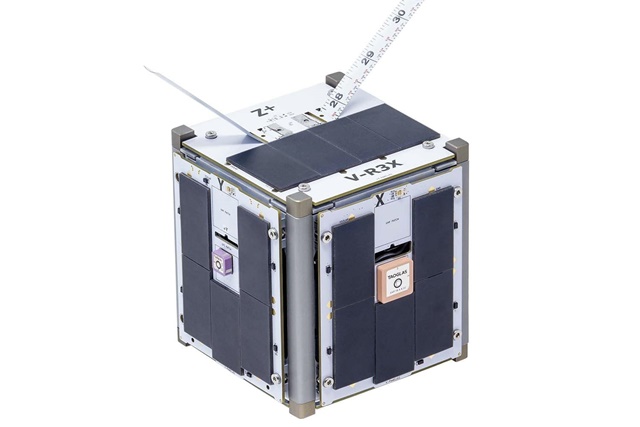22 Jan. 2021. A university robotics lab built three small space satellites for NASA to test radio transmissions in autonomous groups or swarms for more sophisticated future missions. The three CubeSat satellites are scheduled for launch tomorrow morning aboard a SpaceX Falcon 9 rocket into low-earth orbit.
The satellites are the work of the Robotic Exploration Lab at Carnegie Mellon University in Pittsburgh led by robotics professor Zachary Manchester. The lab studies robotic systems for space exploration as well as on earth, particularly for navigation, motion planning, and control.
In this case, NASA wants to learn how fleets of small satellites can communicate and navigate autonomously in a self-contained radio network. The project, code-named V-R3x, starts with the launch of the three small satellites into low-earth orbit, each satellite packed with radio gear to send and receive data on precise spacecraft distances at high speeds. The satellites are also expected to share radiation data gathered with onboard sensors, and coordinate those radiation measurements. In addition, the satellites plan to keep track of their orientation and formation throughout the mission.
“Spacecraft are robots too”
CubeSats are small space satellites built to standard size and electronic specifications. For this mission, Manchester and colleagues equipped the 10-centimeter cubes with S-band radios that perform time-of-flight ranging, which calculates the time needed for radio signals to travel from one satellite to another, then bounce back. The university says those measurements make it possible to compute the distance between two satellites, within half a meter.
“Spacecraft are robots too,” says Manchester in a university statement. “The satellites will wake up and do their thing autonomously. We mainly need to make sure that we get their data downloaded.” He notes that small satellite swarms, operating autonomously, could provide communications for future lunar missions, including NASA’s Artemis program. “This mission is a precursor to more advanced swarming capabilities and autonomous formation flying,” Manchester adds.
NASA’s CubeSat Launch Initiative offers university and high school labs the opportunity to launch satellite projects that meet CubeSat specifications. The SpaceX Falcon 9 spacecraft scheduled for launch on Saturday is expected to deploy dozens of other small satellites, in addition to those built by Carnegie Mellon, including satellites for SpaceX’s Starlink high-speed Internet communications initiative.
More from Science & Enterprise:
- Space Mission Testing Sail to Return Launch Vehicles
- Retina Implant, Stem Cell Studies Set for Space Station
- Coffee, Hemp Cells Set for Space Station Study
- Infographic – More Low Orbit Satellites in Space
- Heart Tissue 3-D Printed in Space Station
* * *


 RSS - Posts
RSS - Posts
You must be logged in to post a comment.